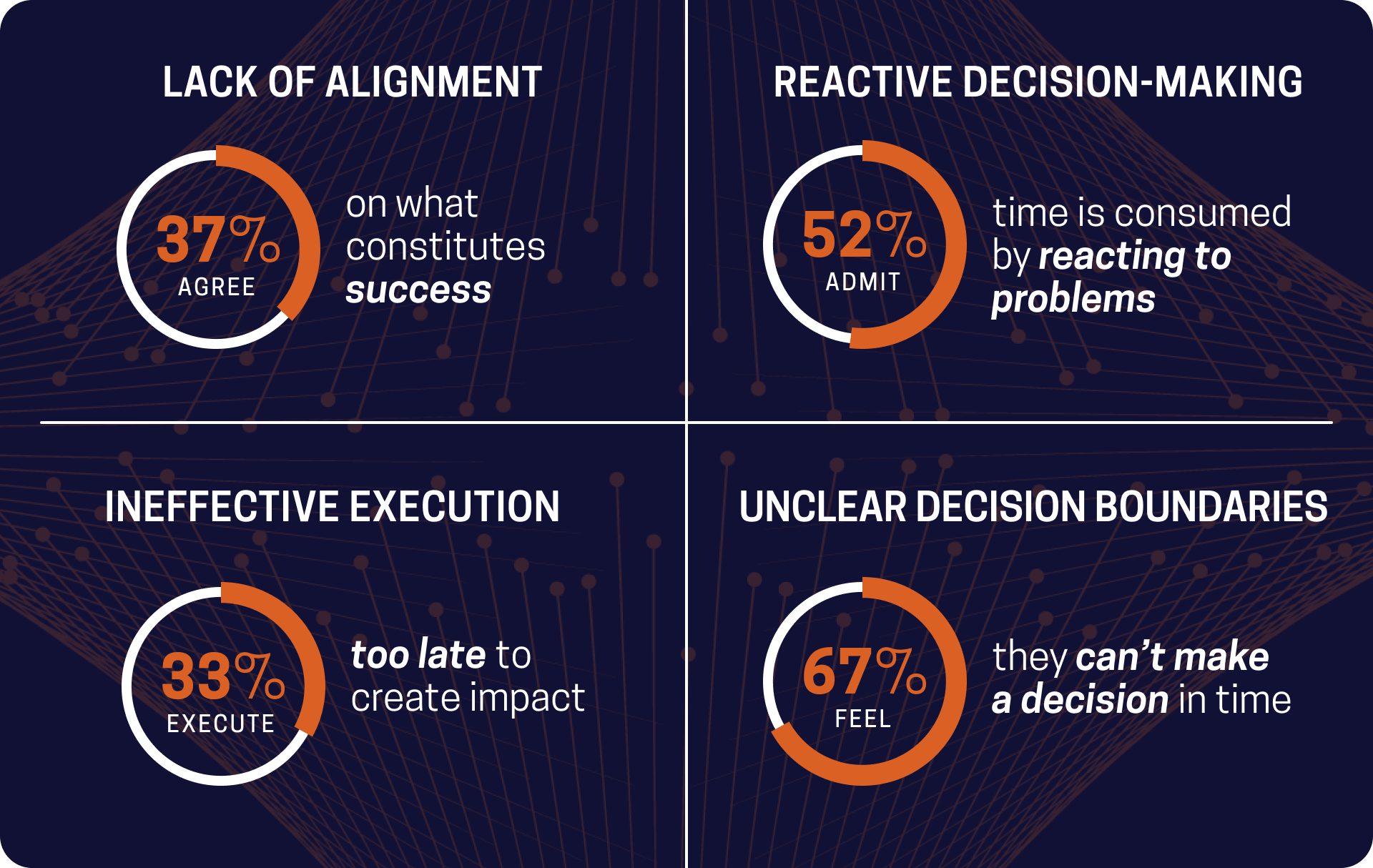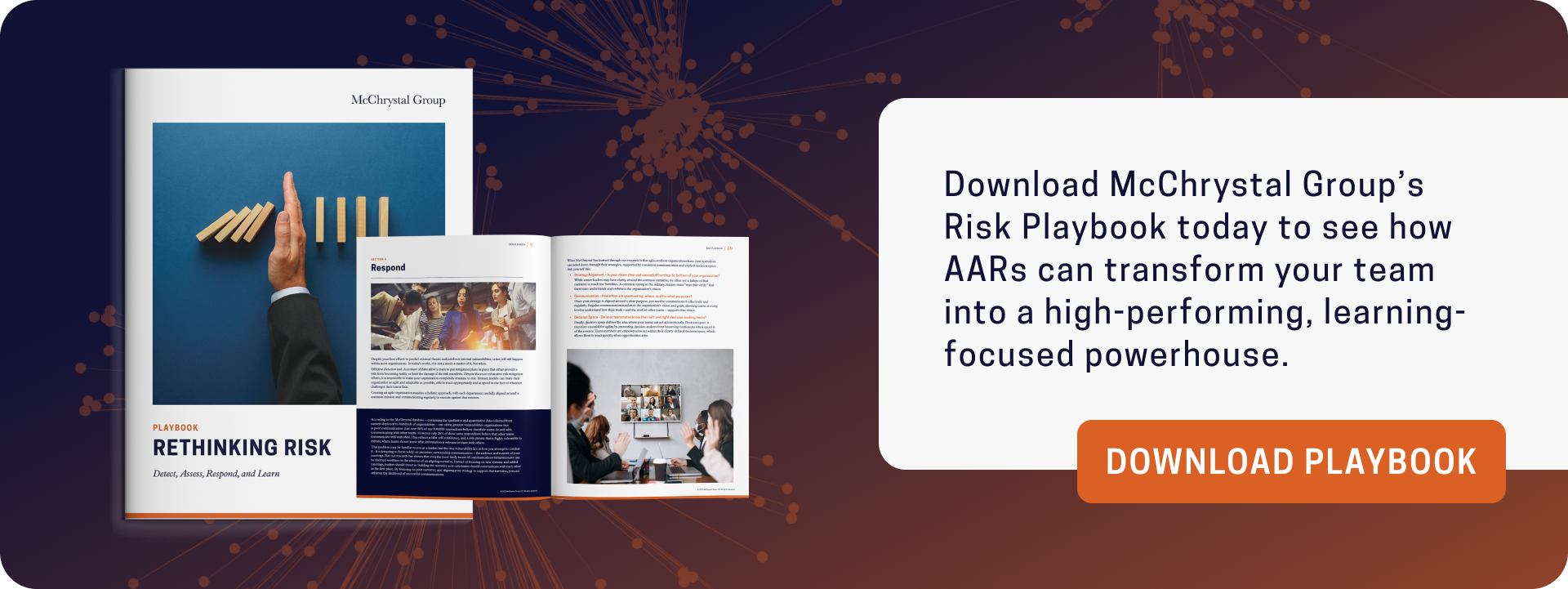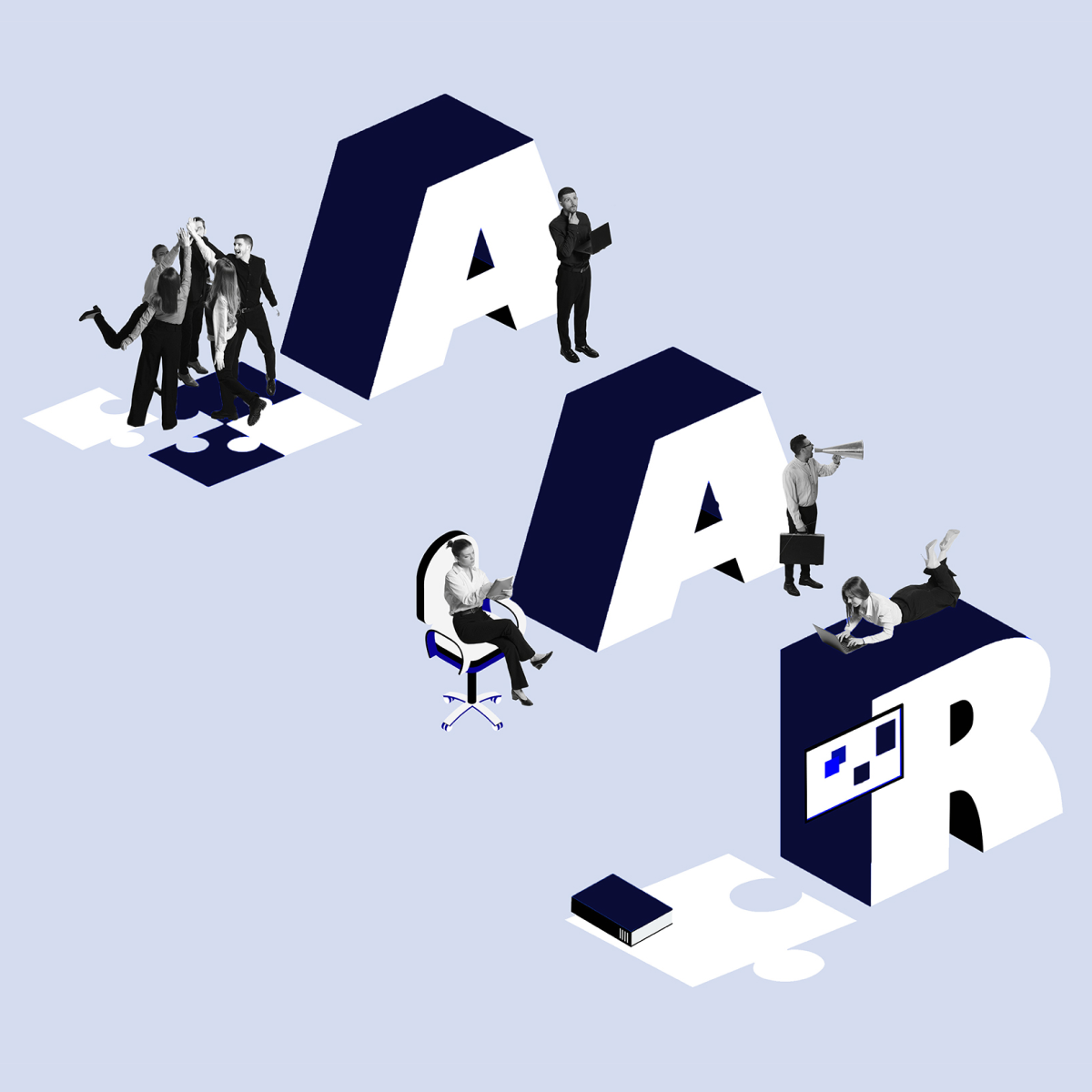The best leaders understand that failure is not only a possibility in complex environments; it’s inevitable, and it can be valuable. Successful professional athletes and coaches have mastered the art of taking a tough loss, reflecting (watching the tape), and then laser-focusing on how they use that information to show up with a better game plan next week. While it may look like a stroke of genius from an outside perspective, more often than not, it’s a product of getting all the right minds focused on what worked, what didn’t, and what needs to change and then making sure those lessons become part of the team’s collective intelligence and culture.

 At McChrystal Group, we call that Shared Consciousness, and it is even more important for business executives, emergency managers, and other leaders where the risk of not learning has much higher stakes.
At McChrystal Group, we call that Shared Consciousness, and it is even more important for business executives, emergency managers, and other leaders where the risk of not learning has much higher stakes.
“Shared consciousness isn’t just a buzzword; it’s what enables organizations to move with agility, especially when grappling with multiple interdependencies at scale," explains Keith Pellegrini, a Partner at McChrystal Group. "At its core, it’s about clarity—it’s about knowing how each decision contributes to achieving the collective outcome.”
But if leaders agree on the importance of learning from mistakes, why are they so frequently frustrated that their teams seem to learn the same lessons “the hard way” over and over? If you find yourself in this position, ask yourself and your team three questions:
- Are the teams involved taking the time to review what they need to do differently next time to achieve a positive outcome?
- Do those reviews account for the people, process, and technology determinants of success?
- Are those teams sharing that valuable intelligence with others who are – or will be – facing similar challenges?
If the answer to one or more of these questions is “No,” your organization can likely drastically improve its efficiency, effectiveness, and agility by optimizing its After-Action Review (AAR) processes.
Here's what industry leaders need to know about integrating AARs into their operations to turn past learnings into actionable, measurable results.
The Consequences of a Failed Shared Consciousness
As McChrystal Group Senior Advisor Robert Hastings describes, “[People] focus on failure as opposed to learning.” As a result, teams not only suffer the short-term effects of a poor outcome but also reinforce the underlying causes and prevent optimization. McChrystal Group data revealed that a lack of information, understanding, and clear decision rights impacted nearly every aspect of organizational performance.
- Lack of Alignment: Only 37% of teams agree on what constitutes success, leading to wasted time, miscommunication, and conflicting priorities.
- Reactive Decision-Making: A staggering 52% of leaders admit their time is consumed by reacting to immediate problems rather than proactive planning.
- Ineffective Execution: Delayed clarity in decision-making results in 33% of organizations executing too late to create impact.
- Unclear Decision Boundaries: Without clarity on who makes what decisions, 67% of teams feel they can’t make decisions in time for effective execution.
- Siloed Learning: Many organizations conduct postmortems after projects but fail to implement lessons learned, causing repeated mistakes.

After-Action Reviews provide a powerful solution by identifying key lessons after a major campaign, event, or product rollout. Through intentional reflection and actionable recommendations, AARs help teams pinpoint what worked, address what didn’t, and create clear strategies to improve future outcomes.
What is an After-Action Review (AAR)?
The AAR is more than just a meeting to discuss what went wrong. It’s a strategic tool that harnesses the power of both reflection and action to improve outcomes in real-time. It unveils issues at the intersection of people, processes, and technology so that teams can target the most impactful improvements.
At its core, an AAR asks teams four simple but powerful questions to uncover hidden insights and foster collective understanding.
Breaking Down the Four Key AAR Questions
Question 1: What was expected to happen?
This question establishes the baseline by focusing on the goals, plans, and intended outcomes. It is essential for aligning everyone’s understanding of what success was meant to look like. By clearly defining expectations, teams can more easily identify gaps between the intent and the outcome.
As leaders, we should push our teams to establish measurable objectives and deadlines to remove ambiguity about what winning looks like and alleviate the emotional barriers that subjective “good” and “bad” outcomes elicit.
Question 2: What actually happened?
With this question, teams analyze the reality of the situation. This involves an honest, fact-based account of events, free from assumptions or blame. By contrasting what actually occurred with what was expected, teams can start identifying discrepancies or unexpected factors.
Leaders must emphasize that establishing a clear chain of events and factors – both internal and external – is about creating opportunities to discuss the most important successes to replicate and challenges to gameplan for the next time.
Question 3: What went well? Why?
Highlighting successes is a crucial aspect of learning. This question encourages teams to identify strengths, effective strategies, and decisions that contributed to positive results. This step is not about inflating egos or softening the sting of what went wrong. Understanding the "why" behind successes provides a foundation for replicating them in the future.
Somewhat counterintuitively, teams with high trust and psychological safety are often the ones most eager to dive headfirst into what went poorly. Leaders must keep in mind that once teams begin troubleshooting a bad outcome, it becomes easy to forget that, in all likelihood, some things worked as planned. Even better, team members may have found an innovative solution or tool that allowed the team to exceed initial expectations. Whether those discoveries were intentional improvements or just lucky coincidences, documenting and sharing ensures those actions become habits.
Question 4: What can be improved? How?
Arguably the most vital question, this step focuses on growth opportunities. Teams need to identify weaknesses, bottlenecks, or overlooked factors that hindered success. The emphasis on “how” ensures the conversation pivots to actionable steps, making this a forward-thinking exercise rather than a retrospective critique.
Leaders bring a top-down view of the situation and are often the best equipped to ask questions or provide observations about interdependencies between teams. For example, a leader may push the teams to focus not only on how a finance team can speed up a decision-making process but also on how IT teams can display data and automate error detection to enhance the quality of decisions. Over time, individual teams will begin to focus on how the entire system comes together most effectively, unlocking transformational lessons.
Translate Lessons into Shared Consciousness
Answering these questions systematically allows teams to uncover invaluable insights, adapt strategies, and improve performance with measurable outcomes.
From emergency response to corporate boardrooms, these questions establish a "shared consciousness"—a concept popularized by General (Ret.) Stan McChrystal, author of Team of Teams. Shared consciousness combines information, trust, and context to help teams cut through chaos, unify their efforts, and act with agility.
“Shared consciousness is the emergent intelligence that allows teams to anticipate opportunities and seize them with speed and precision,” says Pelligrini “It transcends geography, silos, and hierarchies, giving organizations clarity in a world drowning in data.”
When conducted regularly, AARs go beyond diagnosing pain points—they transform reflection into execution, embedding a culture of continuous improvement throughout the organization.
The Proven Impact of AARs
Organizations that integrate AARs into their workflows report measurable gains in key performance areas, such as decision-making, alignment, and operational resilience.
1. Improved Decision Making
AARs provide context and clarity, enabling teams to act faster without compromising accuracy. Whether addressing an unexpected crisis or accelerating a product launch, decisions backed by shared learning are more effective and adaptive.
2. Enhanced Risk Detection & Mitigation
By reflecting on what could have gone wrong and how risks were managed, teams can anticipate future challenges and proactively strengthen weak points.
3. Stronger Cross-Functional Collaboration
AARs break down silos by forcing teams to interact, share perspectives, and collectively own outcomes. This interdependence builds trust and accelerates execution.
Virginia has adopted AAR-driven feedback post-disaster to foster relationships between non-governmental organizations, corporations, and local leadership. These cross-sector partnerships have significantly improved disaster recovery timelines across their communities.
4. Institutionalized Learning
Unlike traditional postmortems that stay buried in forgotten PowerPoint decks, AARs ensure lessons learned translate directly into future plans. When findings are institutionalized, mistakes are not repeated, and efficiency compounds over time.
Research shows that organizations using AARs improve performance metrics by approximately 25%, based on a systematic review of 46 studies by Tannenbaum and Cerasoli.
McChrystal Group AAR Framework
To make AARs actionable, they must be conducted with rigor and intention. Our proven framework ensures no insight is wasted and no action left unaddressed.
1. Pre-AAR Planning
Success starts with preparation. Before every After-Action Review (AAR), it’s essential to ensure key stakeholders are aligned, objectives are clearly defined, and relevant data is gathered for review. Stakeholder analysis plays a crucial role here—understanding who needs to be involved and their unique perspectives ensures everyone is on the same page and invested in meaningful outcomes.
Clear and consistent communication is equally important, laying the foundation for productive discussions and minimizing misunderstandings. Additionally, setting a psychologically safe tone is vital. When participants feel free to share insights without fear of judgment or retribution, the team can focus on honest reflections and actionable takeaways. Establishing this groundwork ensures the conversation moves beyond vague observations and drives real learning and improvement.
2. Conducting the AAR
After-action reviews can range in complexity depending on the situation. Some are straightforward, focusing on a specific event, while others—like those following major disasters or significant market failures—require a more detailed and involved process. Regardless of the scale, every AAR ultimately comes down to answering the Four Questions:
- What was expected?
- What happened?
- What went well and why?
- What can be improved and how?
Meet participants where they are to encourage active participation and candid feedback. To truly uncover root causes and actionable insights, McChrystal Group uses various methods to gather input, such as data scraping, advanced web-based surveys, working groups, interviews, and town halls. These tactics allow you to capture the full range of interdependencies and provide the clearest possible understanding of the connection between actions and outcomes.
3. Post-AAR Execution
The real value lies in ownership and action. Assign specific owners to each recommendation and empower them to take charge. Develop clear strategies and initiatives to accomplish these recommendations, ensuring everyone knows their role in driving progress. Establish systems for regular follow-up to track outcomes, reinforce accountability, and sustain momentum. An AAR should never collect dust—it’s a powerful tool to inspire meaningful change and continuous improvement.
Every organization has an Operating Rhythm – the methods and cadence through which teams come together, share information and drive action. However, not every operating rhythm effectively links strategy to execution.
Your AAR’s should play an essential role in your operating rhythm. Whether they are a standing agenda item on your team’s weekly forum to navigate a dynamic environment or part of your quarterly strategy reviews to shape the direction of your organization, intentionally integrating AARs ensures you don’t repeatedly learn the same lessons the hard way.
Build a High-Performing Learning Culture Today
The difference between good teams and great teams isn’t talent—it’s how effectively they extract and apply what they learn. Using After-Action Reviews as the foundation of your learning culture will equip your organization to move faster, make smarter decisions, and align your people around shared success.

The future starts with reflection. Start your AAR today. Need help? Contact us.




